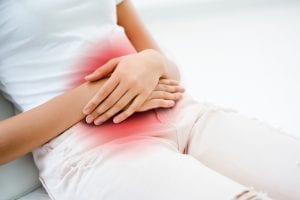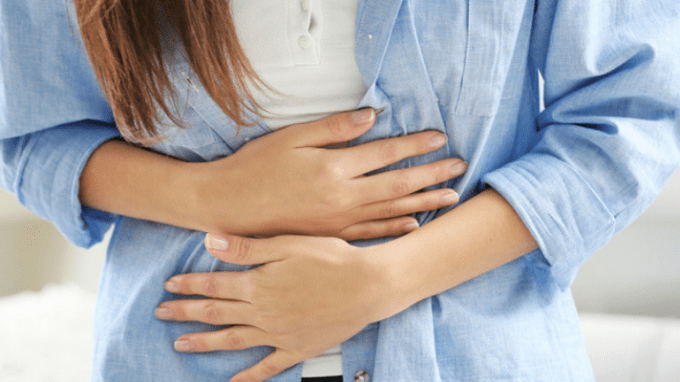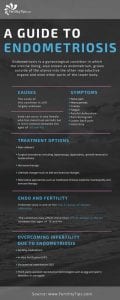Women who experience severe pelvic pain during menstruation may have a condition known as endometriosis. If you have been diagnosed with this condition, it’s important to understand the facts of how it can affect you and what treatments are available.
What is Endometriosis?
Endometriosis is a disorder involving endometrial tissue that ultimately has no cure. Although most symptoms of this condition can be treated to ease severity, one of the main complications of endometriosis is infertility in women of childbearing age.
The condition involves the uterine lining, also known as endometrium, growing outside of the uterus into the other reproductive organs and even other parts of the lower body. Tissue growth may appear as patches and may be spotted on the fallopian tubes, ovaries, pelvic tissue linings or bowel.
What Causes Endometriosis?
The cause of this condition is still largely unknown. However, there are a handful of theories and explanations of what causes it to develop.
Here are some possible causes :
- Genetics: Women with a family history of abnormal growth of the uterus lining may develop the condition if it was passed on through the genes.
- Hormones: The hormones estrogen and progesterone may be contributing factors. Estrogen helps the uterus lining to form and thicken. Elevated levels of estrogen can lead to overgrowth and inflammation of tissue. Progesterone resistance from the endometrium may also cause the condition.
- Menstrual backflow: Menstrual blood contains endometrial cells. Sometimes blood can backflow to the pelvic cavity through the fallopian tube. These cells may then stick to, thicken, and overgrow on the pelvic walls.
- Immune system dysfunction: The immune system plays a role in removing endometrial tissue from outside the uterus. Tissue growth may persist outside the organ when the system fails to carry out this function.
Certain Factors May Increase the Risk of the Condition
There are several risk factors doctors have been able to pinpoint that can make this condition more likely to occur.
Possible risk factors are:
- The first menstrual cycle started before age 11
- Heavy menstrual cycles lasting seven or more days
- Shorter than normal cycles (27 days or less)
- Women who have never given birth
- Women with high estrogen levels
- Menopause began early
- Abnormal uterus
What Are The Symptoms?
Not all women with the condition experience symptoms. Some find out about the abnormal tissue growth on the uterus when they fail to get pregnant or experience several miscarriages.
When symptoms do manifest, they could include the following:
- Lower abdominal pain (mild or severe)
- Severe menstrual pain and cramps
- Heavy menstrual flow
- Pain during intercourse
- Spotting between periods
- Gastrointestinal problems, e.g., diarrhea or nausea
- Difficulty moving the bowel or urinating during menstruation
The final, and sometimes most distressing, symptom is infertility.
Diagnosis Is Made Through Exams and Tests

This procedure can yield the most accurate diagnosis. The doctor can determine the location of the endometrial growth, scarring, inflammation and the severity of the condition. Staging can also be done via laparoscopy. The level of pain experienced due to the condition is not typically considered a factor during staging, since it does not accurately reflect the severity of this endometrial disorder.
What It Means For Conception
Many women can get pregnant normally while affected by endometriosis. However, the ultimate complication of endometriosis is difficulty getting pregnant or staying pregnant.
According to the American Society for Reproductive Medicine, about 24 to 50 percent of women with the disorder experience infertility. In fact, this condition is one of the top three causes of female infertility.
The reason it is so problematic when trying to get pregnant is because the endometrium tissue can block eggs from getting through the fallopian tubes and successfully attaching to the uterine wall. Inflammation can also make implanting more difficult. Lastly, this condition can affect fertility by interfering with egg development and maturation in the ovaries, leaving them incorrectly formed.
There are fortunately some treatments available that may improve your fertility and allow you to get pregnant.
What Are The Treatments?

Current treatment options include the following:
- Watchful waiting, in mild cases.
- Pain relievers and hormone therapy are the most common treatments. Pain relievers can be effective at reducing inflammation and milder pain while hormone therapy can reduce pain caused by the condition as well. It works by slowing the growth of endometrium lining outside the uterus and preventing new growth, thus relieving symptoms.
- When hormone therapy is utilized, the main goal is to lower estrogen levels to stop endometrial overgrowth. Surgery is typically a last resort although it has successfully restored fertility in many women. However, a small percentage of women may remain infertile.
- Surgical procedures are also a possibility. Typically, if your doctor recommends surgery and you opt for it, they will go in, find the excess endometrium lining and remove it. The problem is that this usually only provides short-term relief. However, if you are trying to have a baby that short-term relief may be all you need to successfully conceive.
- Hysterectomy was once a recommended treatment for endometriosis, but that is no longer the case. It has not shown to be very effective, and it is of course not an option if you still want to try for a baby on your own. If you do wish to consider a hysterectomy, talk with your doctor and understand the implications and potential effects.
- Fertility treatments can be used. If you are trying to get pregnant, fertility drugs can be of aid, as can artificial insemination or invitro fertilization.
- Aromatase inhibitors can be an option.
- Eating certain foods, such as fresh fruits and vegetables as well as fatty acids, can also relieve symptoms and increase your chances of getting pregnant. There are also some foods you should avoid, such as gluten, soy and dairy products, as they have been linked to worsening symptoms and, by extension, decreasing fertility.
Conclusion
With all the facts at your disposal, you can make the best decisions for how to handle your diagnosis of this common but problematic condition. Always consult your doctor and evaluate all of your options before you decide on a course of action.





